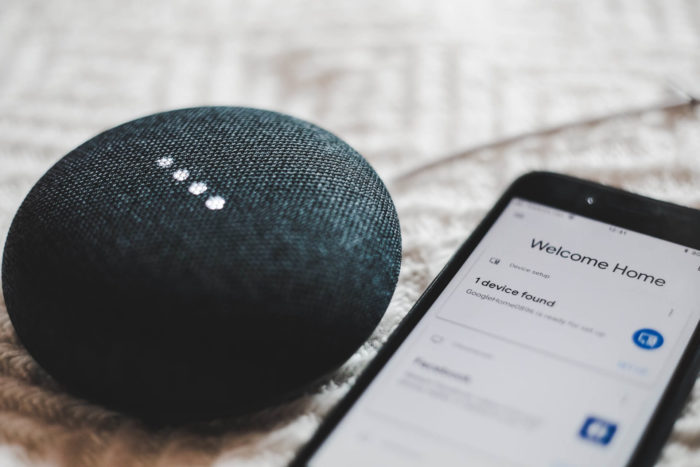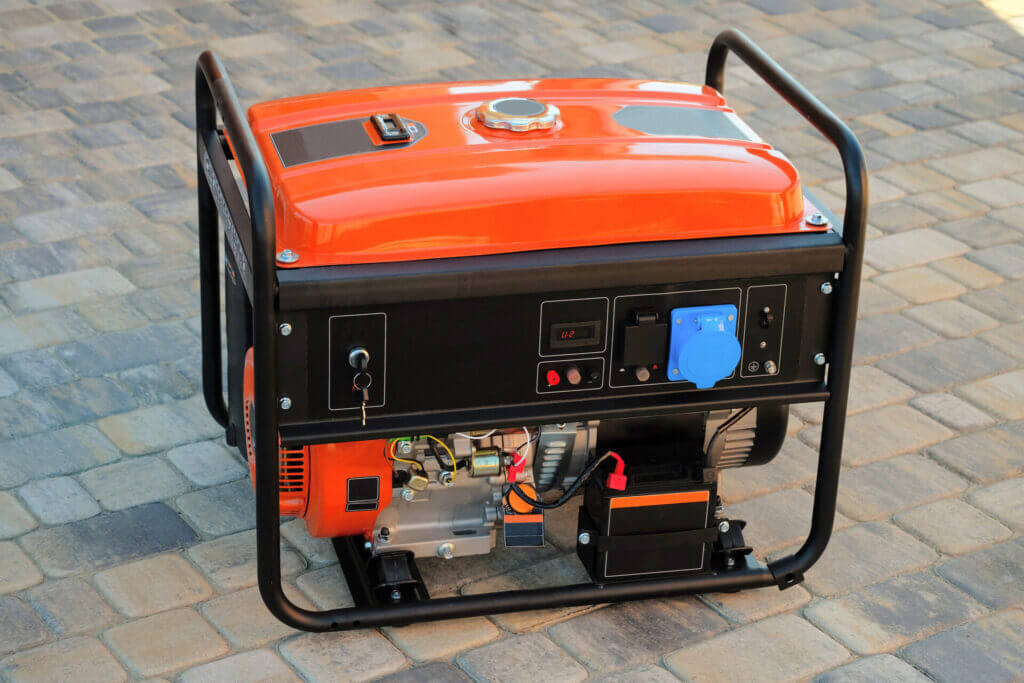Are you doing a home improvement project?
Modernize can pair you with three to four pros in your area, so you can compare options and save time and money.
Home automation is not just about convenience. These days, smart home technology can also save you money. A small, upfront investment can mean the difference in hundreds of dollars in utility costs alone when you learn how to optimize them.
When it comes to smart home devices, most fall into the categories of lighting, heating/cooling, or water. Together, they can all be controlled with a home smart hub, as well. This guide will take a look at the different devices available for each.

Controlling Your Lights Through Home Automation
Tired of flicking every light in your home on and off several times throughout the day to achieve the right mood or brightness? There are tons of technology solutions that allow you to set your lights on timers and use your smart devices as remotes for those on/off switches. Using them can even help you cut down on your power bill by giving you the option to light rooms on a schedule or turn off a light you forgot after you’ve left the house.
In addition, being able to control indoor and outdoor lighting remotely is a good way to give the appearance that someone is home even if you’re out or on vacation.
There are several types of smart light devices you can purchase.
Smart bulbs – By far the easiest to install, smart bulbs simply screw into compatible fixtures in your home and can be controlled individually or through apps on your smart devices. Pick an LED bulb for even more energy savings and opt for a dimmer setting to use less power and save on that electricity bill.
Smart switches – Installing smart switches takes a little more work, but can be a DIY project for the right homeowner. Otherwise you can easily hire a professional to install these devices to work with key fixtures throughout your home. Once operational, you can control the lights plugged into corresponding outlets and fixtures through your smartphone or hub.
Smart outlets – This is perhaps the most versatile way to convert an appliance, light, or device to a smart fixture. Smart outlets plug into your home’s existing outlets and can be controlled through an app or scheduled so that anything plugged into the smart outlet can be turned on and off remotely. Think floor lamps, plant lights, entry and exit lighting, and mood lighting for when the sun sets.
Saving on Water Bills
Whether you’re watering your lawn or trying to prevent major problems in your home’s pipes, there are a handful of home automation smart water features that will help save on those bills.
Smart sprinklers – When it comes to watering the lawn, a smart sprinkler system can sense your soil’s moisture levels and water the lawn only as needed. These devices are also tied into local weather data, so you don’t have to worry about watering your lawn right before it rains, wasting precious resources.
Smart plumbing – Other smart water features can be installed in your home’s plumbing systems to alert you to costly leaks in the pipes and fixtures which can waste water and impact your bills overtime. These devices double as a great warning system for leaks that could end up being catastrophic and costly in your home.
Some smart home devices can even detect floods in your home. This is particularly helpful if you are gone for long periods of time or split your year between two homes.
Smart pools – Have a pool in your yard? Smart pool technology can help you maintain proper water levels and keep chemicals in check by sensing imbalances throughout the day. Many systems also allow you to control your pool’s heat source and lighting so you don’t have to waste energy if you don’t plan to take a dip.
Saving On Heating and Cooling Costs
If you work full time, chances are you’re heating and cooling an empty home most of the day while you are either just in one room or out of the house completely at the office. That’s where smart thermostats are helpful.
Smart thermostats – These devices replace existing thermostats in your home and typically need to be installed by a professional. But once they’re functional, you can adjust your home’s temperatures remotely, setting schedules for your heat or AC to adjust for times when you aren’t home. You can also make sure that your systems kick in on time to reach the perfect temperatures for when you arrive home.
Find the Right Contractor for Your Project
Whether you’re ready to begin your project now or need some expert advice, our network of contractors are here to help. With a few simple questions, we’ll find the best local professionals for you
Smart fans – Smart fans are a great option for sensing heat in a room and turning on to combat temps. And smart shades and blinds can be installed to allow light in or block it out depending on the temps in a certain room.
Saving On Your Power Bill
Even if you’re able to turn every device or bulb in your home on and off, you can’t always prevent them from racking up energy costs. That’s where home automation can help.
Vampire energy – Did you know that devices which remain plugged in can use electricity even if the device itself isn’t turned on or in use? It’s called vampire energy, and everything from your TV to your kitchen appliances could be using it, racking up charges on your monthly energy bill.
In order to avoid the added costs, you can install some technologies to cut power to these devices when they aren’t on, while eliminating the need to plug and unplug them for each – especially if those outlets are in hard-to-reach places!
Smart refrigerators – There’s another appliance in your home that zaps energy each time it’s opened: your refrigerator. Instead of propping the door open to tally your grocery list, new smart fridges snap a photo of their contents which you can view without opening the door, saving money each time your fridge has to kick on to reach optimal temperatures again. This feature is especially helpful if you’re looking for a midnight snack.
Finding the Right Smart Hub
There’s a gadget for everything these days, but smart devices for home automation are only helpful if you use them. That’s where a home hub comes into play.
Most of the technologies outlined above come with their own proprietary phone app. Buy several gadgets from the same company, and you can usually control them from the same app.
But the more you buy, the more apps you have to download. That’s where syncing everything with a home hub becomes super helpful. As you shop, be sure to check for compatibility with these devices and the home hub you use.
Frequently Asked Questions
Can I control my lights, thermostat, and water flow from my home smart hub?
Yes! Most smart home devices have apps that will work in conjunction with your hub. Just be sure to read each product description for specific mention of your preferred device.
I don’t have a hub. Can I control these features from my phone remotely?
Each device will work in conjunction with a proprietary app you can usually download for your particular smartphone for free. In the app, you can set timers and schedules for light fixtures, for example. Be sure to read reviews if you’re concerned about how intuitive these apps are to us.
How expensive are these features?
You can buy smart bulbs and outlets for $10 to $50 a piece, depending on what you’re looking for. Those costs can add up, but you can also save on power bills in the long term.
Is there a system that addresses all of the outlined money-saving technologies or do I have to put a system together piecemeal?
Many companies have entire lines of smart home technologies that all work in conjunction from the same app. That means powering your lights, thermostat, and home security systems from the same place. If you end up going with different companies, a home smart hub can be the key to tying it all together.
Will these gadgets work in my older home?
Yes! There’s a solution for every home, no matter when it was built. Just keep in mind that some devices such as smart thermostats, might require a professional to install.
Next Steps for Home Automation
Ready to save money and time? Start by identifying a pain point in your home by looking at your monthly utility bills. If your water bill has been going up, start with a water leak device. Looking to save on heating and cooling? Try a smart thermostat. Then begin pricing the appropriate home automation technology. As you shop, keep in mind that it’s best to purchase a host of gadgets from the same company or see if they can hook together with a smart hub. Then, you can start controlling each through voice commands.
Find the Right Contractor for Your Project
Whether you’re ready to begin your project now or need some expert advice, our network of contractors are here to help. With a few simple questions, we’ll find the best local professionals for you
Reviews from Real Homeowners
Welcome to Homeowner Resources! We are the Modernize blog. Modernize pairs more than 3 million homeowners a year with pre-vetted contractors in their area. This blog started because we believe homeowners should know everything about their homes, from how their HVAC works to which front door colors they might love. On Homeowner Resources, you can find information on every part of your home, right down to how you can negotiate with contractors to get the best price. Here's more about the blog.
Need a contractor? Learn more about how Modernize finds the right pro for you.





